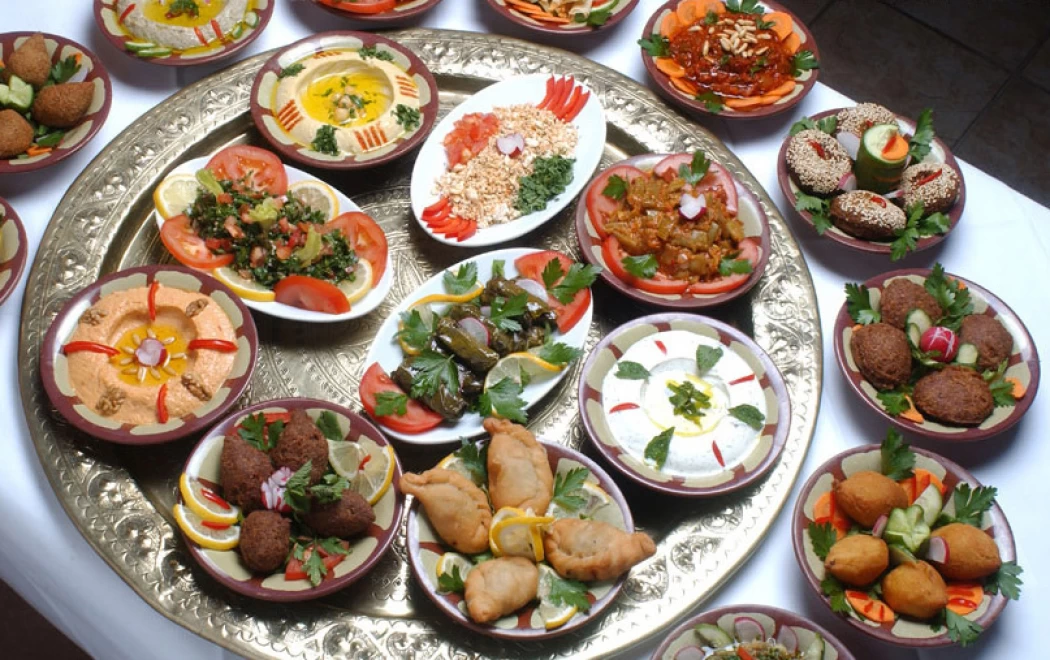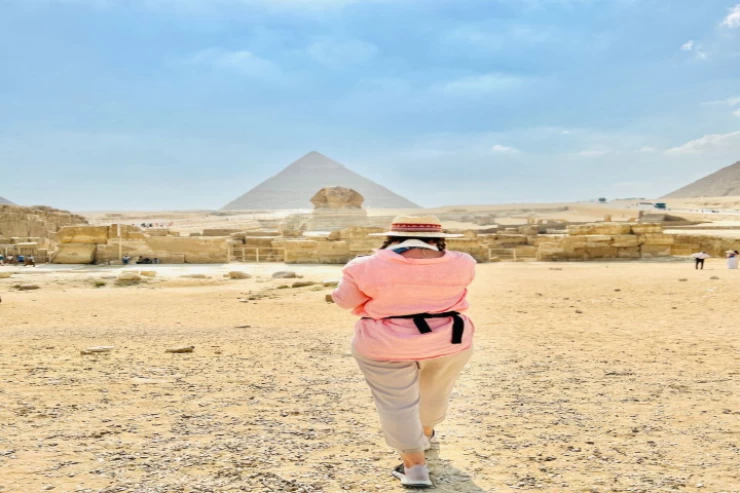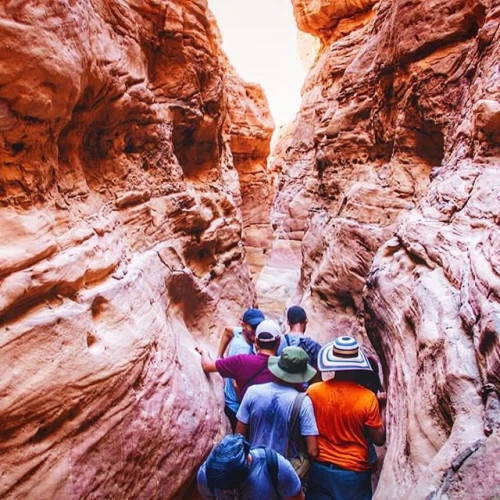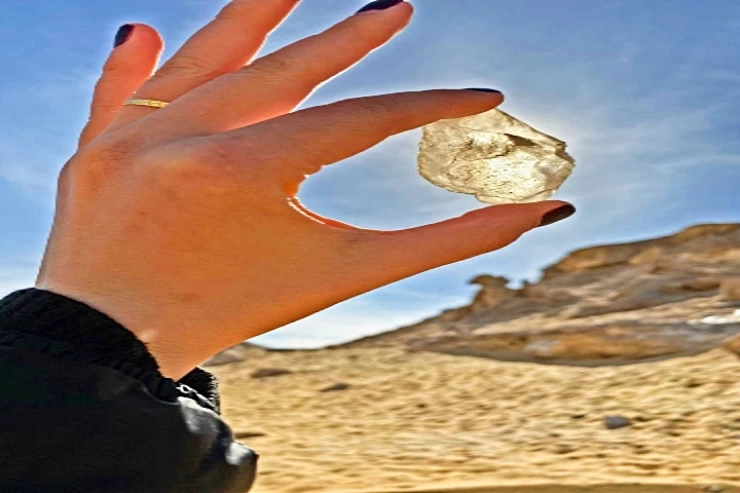
Egyptian Cuisine
Egyptian cuisine
Egyptian cuisine is famous for its variety of foods; it is not famous for one or two kinds of food, but it has many different delicious foods that are distinguished by Egyptian origin, but it also has some external influences from several countries, such as the countries of the Levant and countries on the Mediterranean coast, like Italy and its pasta or Turkey, and these days the popularity of Chinese restaurants in which the Egyptians have excelled as they are adept at many things.
In Egypt, there is something different, which is that each place has its distinctive food, as the cities on the Mediterranean coast have unique food, especially Alexandria, which is famous for the Alexandria restaurant in various meals, and the most important thing that is specialized, of course, is fish, and just as in northern Egypt there is wonderful food, there is also very special food in Upper Egypt, such as meshaltet feteer, which includes the wonderful Egyptian butter that you can eat with honey and cheese.
About Cairo or Central Egypt, it is a mixture of all places in the north or south, and there are also foods of foreign cuisines such as Italian, Turkish, and Indian cuisines as well.
Foreign Effects of Egyptian Cuisine
Italian cuisine
As we know, Italian cuisine is famous for pastries such as pizzas of all kinds, whether it's Margherita pizza, sausage pizza, or others, but the only difference is that pizza in Egypt is more baked than pizza in Italy.
In Egypt, one of the most important meals for lunch is pasta, which varies in forms and ways of preparation. There is pasta with white and red sauce and pasta in the oven, which in Egypt is called béchamel, which is almost taken from Greek cuisine.
Turkish cuisine
The Turkish effect on Egyptian cuisine can be found in charcoal-grilled foods; there is no place in Egypt that does not have a grilled food store, and the most famous of these foods are kofta and kebabs, as well as some Turkish sweets such as baklava.
Syrian or Shami cuisine
The Syrians' presence in Egypt has allowed them to showcase their unique cuisine, which is famous for many wonderful Levantine dishes like shawarma and sambousek, as well as sweets such as meshbek and dumplings.
Egyptian expressions related to food
The word Qardehi means that the food does not contain any meat.
The word cooking is for grains or vegetables such as peas, cowpeas, and even potatoes that are cooked in sauce and accompanied by chicken or meat.
There are words related to meat: meat is called kandouz when the animal is large, and chickens are sometimes called shamroot when the chicken is small.
The breakfast meal is characterized by traditional Egyptian foods, which are foul, taameya, and potatoes, along with eggs and fried eggplant, and there are also cheeses of various kinds, such as white cheese, turkey or turkey cheese, and the breakfast meal is always characterized by having a drink such as tea with milk, coffee with milk, or fast drinks such as orange juice.
As for the lunch meal, it is a meal full of different foods and it is the most basic meal for Egyptians, as it is a meal after which you cannot do anything else, as it is also famous that after it you must drink either hot tea or soft drinks that help in the digestion process after this fatty meal, but this meal depends more on the seasons; there are certain foods in a season that are different from foods in a season, and among the most important foods in the lunch meal are rice, stews, mahashi, pasta, koshari, and many foods that you should not miss, whether in the most famous Egyptian restaurants or even inside Egyptian homes.
Egypt's most popular dishes
Breakfast
Fol Medames
It is a basic dish in the Egyptian breakfast, which is a grain served with oil, cumin, and salt, and you can also put the beans with an Egyptian salad. This mixture is called Alexandrian fol, and it is one of the foods that are characteristic of Alexandria. It is said that foul was discovered for the first time in ancient Egypt, meaning that it is a pure Egyptian meal extending from the era of the pharaohs, but it is known that it was a basic meal in the Middle Ages, and foul is found in many places other than Egypt, such as Syria, Jordan, Saudi Arabia, and some southern European countries.
Falafel or Tameya in common Egyptian slang
This meal is considered the second meal after the breakfast meal; it is a dough fried in oil, and this dough is the original ingredient for it being beans, but it has a different taste than fava beans, and in the Levant countries they use chickpeas instead of fava beans, so it has a different taste, but Egyptian falafel is more wonderful and distinctive, especially in the cities of Alexandria, Cairo, and Giza.
Shakshuka
It is not a basic meal in all homes, but it is an ancient meal that is not compared to other foods, and this meal consists of eggs in the sauce, oil, pepper, onions, and garlic, and you can put some vegetables to give it a different taste, and according to historians, it was first present in the era of the Ottoman state.
Lunches
Mahashi
It is vegetables like zucchini and eggplant that are emptied, leaves like cabbage that are considered a winter food, and grape leaves that are considered a summer food. They are stuffed with rice placed in a mixture of sauce and some other ingredients, then they are placed in water and boiled until they are ready, and there are some houses put with chicken, whether it is grilled or boiled, and this meal is one of the most important and beautiful Egyptian foods, but it is also a meal that is not the same as koshari in the economic decline, despite that it is available to every family and any person regardless of his social class.
Koshari
It is one of the most famous Egyptian dishes in history, and the idea of koshari began in the last century and developed rapidly in the current century, as the shops that sell it increased greatly, which made it a basic meal for all Egyptians; even foreigners come to Egypt to try this meal, which is considered economic for all people of different classes, and koshari consists of pasta, rice, black lentils, fried onions, tomato sauce and frying, and the Tahrir Koshari shop in downtown is one of the most famous shops that sell koshari.
There is also another type of koshari called Alexandrian koshari, which consists of rice, yellow lentils, and some spices and is a light and quick-to-prepare but delicious meal.
Molokhia
One of the most famous and oldest Egyptian dishes, Molokhia, is a plant grown with a long stem and green leaves. It has been an Egyptian food since the Pharaonic era, and over time the molokhia spread from Egypt until it moved to other countries, especially in the Arab countries near Egypt, until it became a staple dish in many countries.
This food consists of the molokhia plant after it is chopped and placed in boiling water or chicken soup; some make molokhia with rabbits and put garlic and some spices in it and serve it most of the time with rice, but there is an Egyptian custom to eat molokhia with Egyptian bread that comes from Upper Egypt and is called solar bread because it resembles the sun a little, so there is no Egyptian home that disagrees that molokhia is one of the most beautiful Egyptian foods that we inherited from our ancestors, the pharaohs.
Desserts
Egypt is famous for its many delicious desserts that have existed since the Middle Ages and before, so this section is characterized by a great diversity between sweets that were transferred to Egypt from abroad and authentic Egyptian desserts.
For example, there is Mahlabiya, which is a milk-based dessert that is a delicious and light dessert that is indispensable after lunch.
There is also rice with milk, and from its name, it is clear that it is rice and milk, and sugar is put in it to give it a sweet taste.
There are many other desserts, such as dumplings and mother on Qatayef, especially during the month of Ramadan.
Culinary Expeditions in Egyptian Food: History and Gastronomy in One Buffet
Each nation has its specialties and recipes that draw from time, culture, geography, and so on, and Egypt is not an anomaly in that order. Egyptian food culture has existed and flourished for thousands of years, and their culinary practices may constitute the simplest of natural ingredients, but they have always been rich and flavorful. Whether swirling through the street markets of Cairo, having seemed more exotic than any empire’s cuisine while dining by the Nile, or tucking into the home-cooked food of relatives in a village in Egypt, one finds the thrill of finding new and exciting combinations of flavors and cuisines in the Egyptian culinary experience, which is also home to wondrous sights.
We can begin from the very first Egyptian bread ovens installed by the Pharaohs and come to the kitchens of today. This only goes to show that Egyptian food is very traditional but at the same time takes in a lot from Italy, the Middle East, Africa, and other places. Now let’s get ready for exploration—culinary exploration to be more exact—and examine the unique features, typical cuisine, and role of eating in Egypt.
A Historical Feast: The Origins of Egyptian Cuisine
The history of food in Egypt dates back to the Pharaoh's time. This is because ancient Egyptians played a great role in agriculture, growing wheat, barley, vegetables, and fruits along the banks of the Nile, which was very fertile. The making of bread was integral to the people, and learning to bake bread is among the oldest culinary practices in Egypt. On tomb paintings and hieroglyphs, images of an intact banquet consisting of bread, fish, meat, fruits, and beer are illustrated, which indicates the significance of food in ancient Egypt.
Throughout the ages, Egypt’s culinary art has changed due to many factors over the centuries. For instance, the Greeks, the Romans, and many other civilizations including the Ottomans and Arabs had a role in these changes. Each civilization made contributions in one way or another, bringing along new herbs, cooking methods, and food elements that fused with the ethnic culture of the region to give rise to the effective and delicious cuisine that we have nowadays.
The cuisine of Egypt is characterized by the use of uncomplicated and healthy ingredients, most of which are produced in Egypt itself. Here are some of the main elements that are central to the practice of cooking in Egypt:
Fava beans (ful): Fava beans are one of the most popular ingredients in Egypt, featuring in full, another traditional dish in which fava beans are stewed, and taameya, or Egyptian falafel.
Bread (Aish Baladi): In every Egyptian meal, there is bread included. The most familiar is called aish baladi, which is a circular flatbread made from whole wheat flour slightly thicker than pita and used extensively. It is used to scoop food, wrap around food, and with many other dishes.
Rice: In Egyptian culture, rice is often served as a side dish and is usually exceptional to dishes like gumbo, grilled dishes, or loaded up with other ingredients and spices.
Lentils: The lentil pulse is popular and often used in many Egyptian plates; for example, these include soups, stews, and kosher.
Herbs and spices: One of the main reasons is that most of the food is also full of warm and earthly favors. So, fresh herbs like cilantro, parsley, dill, and spices like cumin, garlic, cinnamon, and turmeric are often added in cooking.
Molokhia: Another quintessential favorite from Egypt is molokhia, which is derived from a green leafy plant with a warm and gooey texture served as a garlicky soup and eaten with rice or bread.
Within Egypt's extensive history, there exists an array of Egyptian dishes that are quite distinct from one another. Thick hearty stews, deep-fried street snacks, and sugary desserts that provide warmth—there is something for everyone. Below are some of the primary dishes that typify the Egyptian food culture:
1. Ful Medames: The National Dish of Egypt
Ful medames, or farinaceous porridge, as it is better known, is a delicious, rich food consisting of seasoned, slow-cooked fava beans with olive oil, lemon, garlic, and cumin. Normally it is taken for breakfast with additional healthy foods such as fresh bread and eggs and some other vegetables like tomato, onion, and cucumber. Being Egyptian national food, it is highly appreciated by residents, and clearly for the tourists, it is a must-dish. This uncomplicated and delicious it has been part of culinary history for many generations, even from Pharaoh’s reign.
2. Taameya: Egyptian Falafel
Globally referred to as felafel, the taameya is the Egyptian equivalent of this popular street food. Unique to the Egyptian version of taameya is the use of fava beans instead of chickpeas to prepare also lighter, airier, and fluffier balls than the rest. Light, crispy, and deep-fried golden brown fritters flavored with herbs—coriander and parsley—would usually be sandwiched in between tahini, salad, and pickles. Taameya can be eaten as a snack or consumed as a meal, and it will prove hard to resist for anyone who tries it.
3. Koshari: The King of Street Food
The most popular street food in Egypt is kosher. Meaning “a mixture,” comfort comes naturally wherever this staple meal type exists. Koshari consists of rice, lentils, macaroni, and chickpeas, which are further topped with a delicious tangy tomato sauce as well as crunchy fried onions and spicy garlic vinegar. Due to its filling properties and inexpensive price, this carbohydrate-rich food entices every Egyptian citizen across all strata. Although kosher boasts simple and cheap ingredients, the dish is a complex jumble of flavor and texture and is highly seasoned.
4. Molokhia: A Green, Garlicky Delight
One of the first food experiences that leaves visitors to Egypt oftentimes unprepared is the strangely tasty and textured dish called Molokhia. The dish consists of cooked mookhia leaves (which are the jute leaves), blended with garlic and coriander to make an edible green paste. This dish is often served together with rice or a dish called aish baladi (Egyptian bread) and is sometimes eaten with chicken, rabbit, or beef. The slimy feel of the dish may take some getting used to, but it is a treasured dish among the Egyptians because of the comfort it brings along with the flavor of the dish, which is not normalized.
5. Mahshi: stuffed vegetables
Mahshi is a common term for toppings stuffed into vegetables such as zucchinis, peppers, or grape leaves that contain rice, spices, and sometimes meat. The stuffing is the center of having tomatoes, onions, and all the spices, which results in the rich and interesting taste of the dish. Mahshi is often cooked on holidays and parties due to the time and effort invested in cooking it. This dish consists of tender soft vegetables in every bite filled with aromatic rice, making it a perfect yummy comfort food back home in Egypt.
6. Fattah: A Festive Feast
Fatet, located in the middle of the plate, is a celebratory platter put together only on rare occasions, such as wedding parties or religious festivities. It consists of crisp, deep-fried bread pieces, rice, and stewed meat, all drenched in vinegar and garlic sauce. The way of serving and eating changes as the dish is filled with broth, resulting in a sumptuous and rich dish that fills one's stomach. In Egyptian traditions, Fattah connotes plenty and refreshment and is thus served and savored on occasions such as feasts and family get-togethers.
7. Hawawshi: Egyptian Meat Pie
Ful medames is a popular street food in Egypt made from boiled fava beans seasoned with olive oil, salt, and cumin. Hawawshi can be considered the Egyptian version of a meat pie. Ground, spiced, and cooked meat, often combined with vegetables and will almost always contain herbs, is present in a pocket of pita bread and oven-baked. The end product is a very sumptuous, tasty, and moist filling beautifully enveloped in a crisp crust. Hawawshi is well-loved by many as a street bite and is ideal for snacking in a hurry or for a quick lunch.
And no exploration of Egyptian gastronomy would be seen as if without having a taste out of its sweetest part. Egyptian sweets are heavy and rich, loaded with nuts, honey, and spices. Below are some of the famous confections found in the native country:
Basbousa: Syrup cake garnished with either almond or coconut. In Egypt, this sweet, moist cake is symbolic of festivities, and it is served in almost all functions.
Konafa: Pestilious stuffing of nuts, cream, or cheese, prohibitively sweetened and layered in a cake made of a very thin chick pastry rolled into slippery threads. In many Arabic countries, konafa is served during the holy month of Ramadan and other feasts.
Om Ali: Egyptian pudding made of layers of marinated and baked phyllo dough and milk with nuts, raisins, and spices. This rich and hearty dessert is usually prepared during festive occasions like family gatherings and cultural events.
Shai is among the beverages that are most enjoyed in various aspects of life in Egypt, more so in gatherings. It is typical for the Egyptians to consume tea without milk, sweetened with sugar, or flavored with a bit of mint. In the case of many Egyptians, tea is not just another drink but an intricate cultural aspect because it represents hospitality and relaxation, especially after a heavy meal or while engaged in social activities with friends. In addition to tea, Karkadeh, which can be referred to as hibiscus tea in English, is another beverage well appreciated in Egypt characterized by its unbelievable red color and a tasty sourness.


















